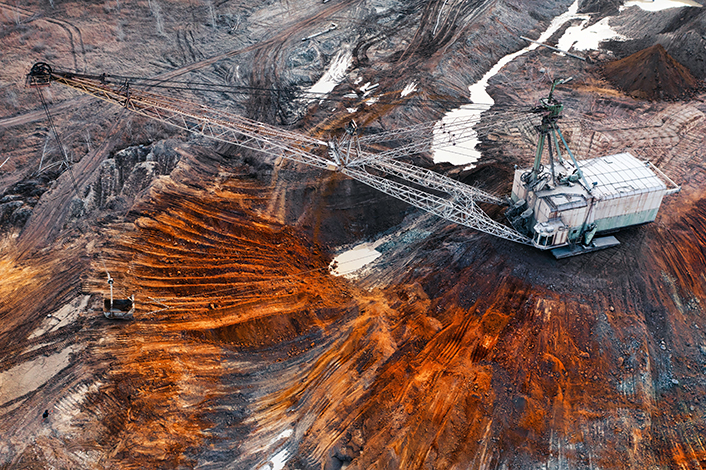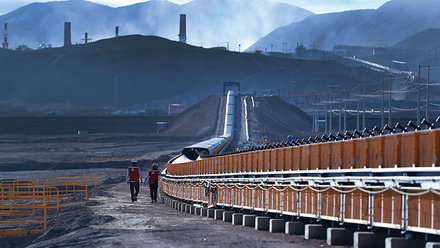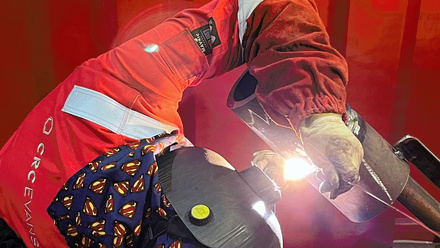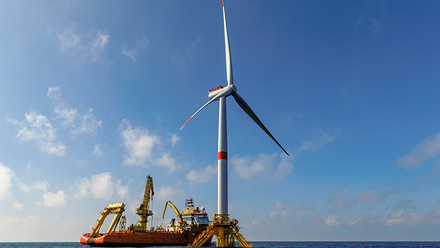Risks and opportunities for the mining industry in 2025
EY’s survey of senior leaders in the mining industry across key geographies reveals a balancing act for companies.

EY finds mining firms to be balancing demand for minerals and metals with capital discipline, sustainability goals and elevated stakeholder expectations.
The energy transition continues to disrupt the sector and drive the leadership agenda, according to the 2025 survey.
'I think we’re seeing that investment and demand for minerals from the energy transition is driving a lot of what’s happening in our industry – [there is] unprecedented demand for a range of minerals,' said Paul Mitchell, EY Global and Asia-Pacific Mining & Metals Leader, at the launch in Perth, Australia, of the 17th annual survey of the Top 10 business risks and opportunities for mining and metals in 2025.
This trend, along with the need to maintain capital discipline, has elevated capital to the #1 risk for 2025.
Mining companies are under increasing pressure to manage capital effectively while making strategic investments in growth.
The report says '…the sector faces a trifecta of challenges – achieving sustainable mining while managing capital discipline and meeting higher stakeholder expectations. Significant transformation of the sector is now critical, requiring innovation, collaboration and agility.'
Long-term gains
Mitchell expressed confidence in price rises, forecasting copper to break at US$10,000/t and the recovery of nickel and lithium. 'But there is not capital in the globe to open all of those mines and operate them all at one point in time,' he noted.
Every survey respondent expects to actively pursue one of the following in the next year – mergers and acquisitions (M&A); divestments, spin-offs or initial public offerings; or joint ventures or strategic alliances with third parties.
The continuing focus of miners on M&A needs to shift to building new mines, which will inevitably reduce returns in the short term, finds the report.
Mitchell noted 40 new copper mines the size of Quellaveco, Peru, (300kt a year) are needed by 2050 to meet future demand, and that Quellaveco alone cost US$10bln and took 20 years to develop.
'Exploration costs have gone up tenfold in the last 13 years. If exploration costs have gone up, development costs have gone up,' he added.
Lee Downham, EY EMEIA Mining & Metals Leader, expanded, 'Miners must move from focusing solely on short-term returns to prioritising long-term value creation. While they have a strong track record of capital discipline, it’s now crucial to balance this with strategic investments that drive sustainable growth.'
Risk awareness
Two new risks on this year’s radar – resource depletion and new projects – show that leaders understand the need for change.
Resource depletion ranked #4 and new projects ranked #8, driven by soaring demand for minerals and rising exploration and construction costs.
'Mine closure has become a reality,” Mitchell said. “Mine replacement is something that we’ve got to do.'
The report notes that, over the next 30 years, we will need to mine more than we have over the last 70,000 years.
However, capital raised for exploration has declined by 4% year-on-year, with budgets favouring gold over critical minerals like copper, which from 2020-22 sucked up more than 50% of that investment.
Although, 'In 2023, we saw the beginnings of a shift, with copper, lithium and nickel exploration budgets up 12%, 77% and 45% respectively', reads the report.
Nature positive
Meanwhile, as environmental stewardship takes centre stage, mining companies are prioritising nature-positive initiatives to meet growing investor expectations. Almost half of respondents (46%) are extremely or very confident about meeting their nature-positive obligations.
A commitment from the International Council on Mining and Metals to nature-positive goals has also heightened attention on biodiversity, water management and other critical environmental, social and governance issues across the sector.
Waste management has also become a key area of scrutiny for investors. This year, the focus on waste is broader than just tailings, with progressive miners capturing value by improving mining performance, implementing closed-loop processes and reprocessing mining waste.
No silver bullet
Ultimately, lack of new discoveries and long permitting times put the energy transition at real risk, EY warns, alongside the shortage in skilled professionals coming into the sector.
Over half of survey respondents included workforce issues in their top 10 ranking. As a board member of the Colorado School of Mines, Mitchell said, 'The number of people coming through and doing mining engineering degrees is scary.
'We need to build that brand and make sure that everyone realises that just energy transitions depend on this industry.'








